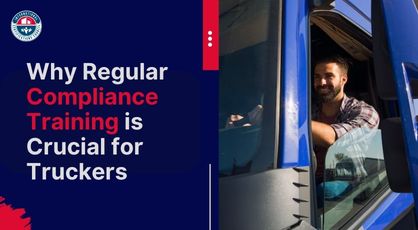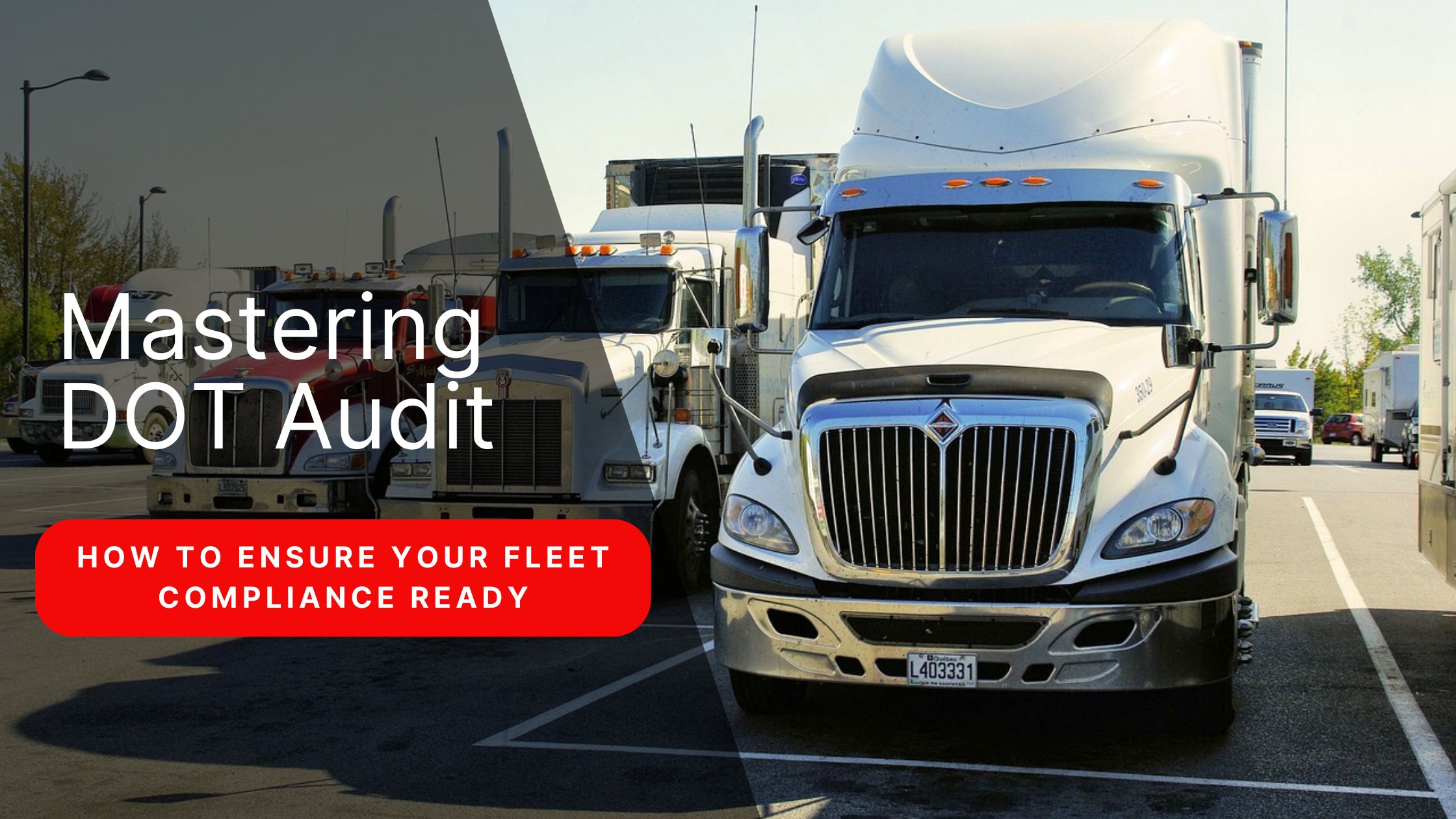Fleet compliance training isn’t just a regulatory hurdle; it’s about keeping your drivers safe, your operations smooth, and your expenses under control.
As a trucking company, your goal is to ensure your team understands and practices these rules in a way that becomes second nature. Training your team on fleet compliance can feel overwhelming, but it doesn’t have to be.
Let’s walk through a practical and relatable approach to help your drivers and staff embrace compliance, not just follow it.
8 Tips to Train Your Team on Fleet Compliance
Here are some great tips to train your team on fleet compliance.
1. Start with the “Why” Behind Fleet Compliance
Rules for their own sake are not something anyone enjoys. Start by outlining why fleet compliance matters if you want your staff to treat it with importance.
It's about safety, saving lives, and stopping needless breakdowns or mishaps that could cost your company greatly, not just about avoiding fines.
Consider it this way. Imagine one of your drivers misses a critical tire pressure check. Later, a tire blowout occurs while driving on a crowded highway, endangering everyone around.
This kind of example makes compliance personal and relatable. People are more likely to follow procedures when they understand the real-world consequences of not doing so.
2. Simplify the Complex: What Do Drivers Really Need to Know?
The world of fleet compliance training is packed with regulations. To keep your training effective, focus on simplifying these rules into digestible parts.
- Hours-of-Service (HOS) Rules: Explain HOS regulations in plain language. Break down the daily driving limits, required rest periods, and how to properly log them. Use practical scenarios: What happens when a driver is close to hitting their limit but is only half an hour away from a delivery? Discuss strategies to handle these situations responsibly.
- Vehicle Inspections: Instead of a dull checklist, walk your drivers through an actual pre-trip inspection. Point out things that are easy to miss, like a loose light or a small fluid leak. Use a truck from your fleet as an example and highlight what each inspection point prevents—like avoiding costly repairs or even dangerous roadside emergencies.
- Load Securement and Weight Limits: Visualize the impact of improperly secured cargo. Share a story or a news report about an incident where cargo shifted, leading to an accident. This gives the lesson a dose of reality and emphasizes the need for caution.
3. Make Training Interactive and Memorable
Nobody wants to sit in a room for hours just listening to someone talk about regulations. To keep your team engaged, make your training sessions interactive.
- Hands-On Practice: Instead of a lecture, take your team out to the yard. Show them what a proper vehicle inspection looks like. Let them practice and ask questions. Demonstrations work wonders compared to theory alone.
- Role-Playing Scenarios: Create hypothetical situations where drivers must make quick decisions. What should they do if a weigh station is right ahead but they realize their logs aren’t up to date? These scenarios encourage critical thinking and allow for open discussion on best practices.
- Use Technology Wisely: If your budget allows, invest in simulators that mimic real-life driving and compliance situations. These tools help drivers experience the impact of decisions in a safe, controlled environment.
4. Speak Their Language: No Jargon Allowed
Regulations are complete with technical terms, but you don’t need to overwhelm your team with jargon. Break down the language into something everyone can understand.
Say, for example, "Let's make sure our truck isn't carrying more than it should, or we risk fines and accidents," instead of "Ensure compliance with gross vehicle weight ratings." Though more relevant, the same message is conveyed.
Speak in straightforward language to convey the point without having people's eyes glaze over.
5. Use Visual Aids and Tools
Sometimes, visuals can explain things better than words. Incorporate videos, diagrams, and infographics to reinforce your points.
- Training Videos: Show short clips on how to perform vehicle checks or what happens during a roadside inspection. Videos help break the monotony of a long training session and make concepts clearer.
- Posters and Infographics: Use these as reminders around your facility. A simple poster showing the proper way to secure a load or a diagram of HOS rules can serve as quick-reference tools for drivers.
- Laminated Checklists: Equip your drivers with checklists they can keep in their trucks. Make them durable and easy to read. The more accessible the information, the more likely it’ll be used.
6. Keep Training Ongoing and Up-to-Date
Rules change, and drivers can forget what they’ve learned if they don’t use it daily. Make sure fleet compliance training is a continuous effort, not a one-off session.
- Monthly Toolbox Talks: Dedicate 15-30 minutes each month to refresh important topics. Cover recent changes in regulations, discuss incidents that could have been prevented with better compliance, or simply review the basics.
- Self-Paced Online Courses: Provide digital modules drivers can complete at their convenience if in-person instruction is challenging to plan. Ask questions to be sure they understand the material.
- Feedback Loops: Create a way for drivers to give feedback on the training. If they found a section confusing or felt something wasn’t covered, use this input to improve future sessions.
7. Promote a Compliance-First Culture
Compliance should be woven into the very DNA of your business rather than viewed as a burden. Your team is more likely to follow safety policies and rules if they see you give them great weight.
- Lead by Example: Drivers will follow suit if managers and dispatch value compliance first. Make sure every member of your company sees the need to follow the guidelines.
- Recognize and Reward: Celebrate compliance successes. Maybe you give out awards for perfect inspection records or have a shoutout board highlighting drivers who go above and beyond. Recognition motivates people to keep up the good work.
- Encourage Reporting: Make sure drivers are at ease disclosing problems. If something is wrong with a truck, they should know it would be better to bring it up than ignore it.
8. Track Progress and Adapt
Training isn’t effective unless you measure its impact. Monitor safety records, HOS compliance rates, and any incidents related to regulations.
- Review Data Regularly: Look for trends that may indicate where training needs to be reinforced. If pre-trip inspection failures are increasing, that’s a sign to revisit that topic.
- Stay Adaptable: Regulations evolve, and so should your training. Stay updated with industry news and be ready to adjust your program accordingly.
Conclusion
Fleet compliance training might seem like a daunting subject, but it’s manageable—and even engaging—with the right approach.
Make training practical, relatable, and continuous.
Your drivers are the heart of your operation, and empowering them with knowledge and skills keeps everyone safer and your business thriving. Start implementing these steps today, and watch your team become compliance champions. Safe travels, and keep it compliant!
Need top-notch DOT compliance training for your trucking team? Iccouncil offers industry-leading online courses tailored for transportation and logistics businesses. Ensure your team is well-versed in DOT regulations and keep your operations running smoothly and safely.
Enroll today and drive your business forward with confidence!






